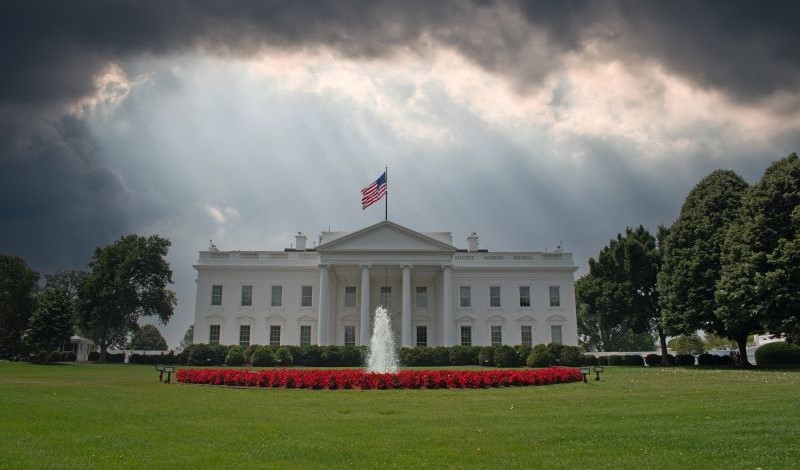
Graham offers a balanced history but misses an opportunity to reimagine the regulatory state.
As proponents of a strong federal regulatory system to protect public health, worker safety, and the environment, we welcome the opportunity to review John D. Graham’s book, Regulatory Reform from Nixon to Biden.
Graham ran the White House Office of Information and Regulatory Affairs (OIRA) under President George W. Bush, an office with enormous power over government regulations. Although some observers found Graham difficult to peg as a “conservative,” he was widely supported by conservatives and businesses and opposed by environmental, consumer, and labor groups.
We found that Graham’s book offers a fair, balanced, and comprehensive history of the influential role that Presidents play in regulatory matters. The book is structured with a chapter on the regulatory actions of each of the last 10 Presidents, starting with President Richard Nixon and ending with President Joseph R. Biden. We learned from each chapter, particularly from the chapters on early Presidents.
Graham has written an excellent book for students and professionals interested in learning about government regulation over the past 50-plus years. He has conducted extensive, meticulous research and methodically documented all of his points—the book runs to more than 500 pages. He also deserves credit for largely avoiding a conservative bias in his writing. Students of history and of government regulation will also appreciate Graham’s easy-to-read writing style and his ability to explain complex, if not cumbersome, issues. Most of the time, he does a good job summarizing contentious debates and disagreements among pro- and anti-regulatory forces in understandable ways.
Graham writes that his analysis “busts some myths” and reveals some “unexpected patterns.” For example, the book highlights “the mistaken notion that Republican presidents rarely support regulation and Democratic Presidents rarely support deregulation.” Graham also notes that Republican President Ronald Reagan is “often credited with the best record of deregulation, yet many of the foundations of Reagan’s reforms were laid” by President Jimmy Carter, a Democrat.
President Reagan issued what conservatives call an “iconic” executive order requiring cost-benefit analysis of major rules and centralizing White House review of regulations in OIRA. According to Graham, it was modeled on an executive order by President Carter.
Two themes run throughout Graham’s review of the 10 Presidents: White House centralized regulatory review and cost-benefit analysis. Each President had opportunities to replace these processes, but none did even though their approaches to cost-benefit analysis may have differed. For example, Democrats, such as President Biden, tended to place more emphasis on distributional impacts and analysis of non-monetized effects when doing cost-benefit analysis.
To his credit, Graham is not an anti-regulatory evangelist. He sees the need for regulation to address inequities in society, whether they be economic, social, environmental, or otherwise. His bias for cost-benefit analysis runs throughout the book, but he understands the need for some flexibility to accommodate costs that cannot be monetized.
And Graham acknowledges that the White House, through OIRA, not only has regulatory review powers, but it also can shape an agency’s agenda, as well as dictate or influence what information an agency can collect from the public, how agency research is conducted, what government transparency standards an agency must follow, and even how an agency engages the public. That is a powerful office—and most of the White House’s activities are done behind the scenes.
Although the book is comprehensive in looking at how Presidents have influenced regulation, it misses some influences on Presidents’ regulatory actions. The book begins by describing how federal regulation impacts a “typical American family” in a day but does not trace why regulations are needed to help implement laws enacted by Congress that are intended to make us a stronger, safer, and more vibrant democracy. The book also does not describe the multi-decade efforts by industry to shape negatively the narrative on regulation.
It can take decades—crossing multiple administrations and requiring intense lobbying—to complete rules. For example, Graham notes an Obama Administration regulation to protect workers exposed to silica particles created by cutting materials in the workplace. But Graham does not mention that it took 45 years to adopt the exposure standard, even though silica dust was known for decades—if not centuries—to cause lung disease and cancer. The journey to a final standard involved pressures brought by workers who were met with bureaucratic governmental inaction and business opposition. About the silica rule, Politico wrote that government “is often slowest at regulating those health dangers that pose the greatest risk” because “doing so typically imposes enormous costs on business.”
For health, safety, consumer, and environmental regulations, the system is stacked against those who need public protections and instead favors regulated interests, including big business. The slowness of the adoption of the silica standard shows how Presidents recognize that regulations cannot be separated from political considerations. Business brings political power along with campaign contributions. Meanwhile, workers get sick and die.
The book does not mention regulatory capture—a process by which regulatory agencies are influenced by the industries and special interests they are supposed to regulate—and how it undermines public interest protections. A classic example is how rail magnates of the early 20th century shaped the actions of the Interstate Commerce Commission, which was formed to keep them in check. Even if not established with a bad intent, the close relationship an agency has with the industries it regulates has a subtle but powerful influence on the outcome of regulations. Many agencies, for example, rely on the companies they regulate to provide cost estimates for agency cost-benefit analyses.
The gaps we identify do not vitiate the value and utility of Graham’s historical analysis. No author can cover every aspect of a subject.
There is, however, one major flaw in the book: the last chapter on the future of regulatory reform. The chapter begins with a summary of the book and explores areas where government regulation will be needed in the future—all of which is helpful. Examples include climate change, artificial intelligence, the internet, firearm violence, and illegal immigration. We know that government will need to act more quickly and flexibly than it now does to protect communities against fires and floods, restore communities that have been devastated by them, and regulate changing technology, among other things. The recent Los Angeles fires remind us that we need rules that do not choke disaster victims on paperwork and are malleable enough to respond quickly to the public’s needs—such as for affordable housing and modern water infrastructure.
Progressives and conservatives can certainly agree that the current regulatory system needs reform. But Graham proposes a rehash of many conservative proposals strongly opposed by progressives and the public interest community. Many such proposals would add additional layers of process that would slow down, if not stop, regulation. Some proposals, such as creating the equivalent of OIRA for Congress, have even been rejected by nonpartisan congressional experts as unworkable.
The last chapter is a missed opportunity for a reimagined administrative state that is responsive to changing social, economic, and environmental issues and can bridge the 50-year-old divide between progressives and conservatives on regulatory matters. We hope that Graham will address this subject in his next book.
This essay is part of a series, titled “Presidential Legacies of Regulatory Reform.”





